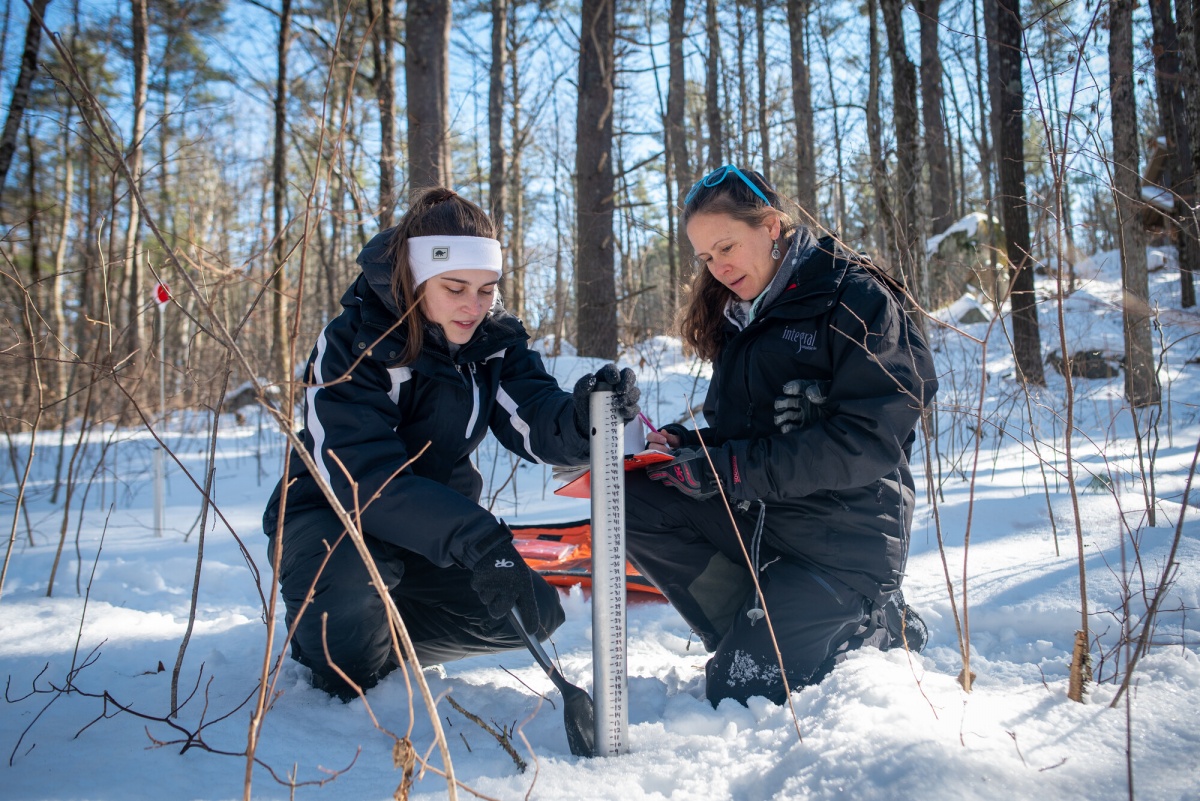Despite the dire forecast for the future of deep, consistent snow in New England, UNH researchers say that reducing carbon dioxide emissions now could still lessen the impact of climate change on snowpack — and protect the economy and ecology that depend on cold weather.
Using climate models, researchers examined the effects of both high and low levels of carbon dioxide emissions on future climate warming scenarios and found that a reduction in emissions could preserve almost three weeks of snow cover and below-freezing temperatures.
“Taking serious action now to limit, or slow, the warming of winter could mean preserving many core purposes of cold weather.”
“The local ski hills of New England raised me to love winter and snow,” said Elizabeth Burakowski, research assistant professor in UNH’s Earth Systems Research Center and first author of the new study. “But winters are vital to all of us and taking serious action now to limit, or slow, the warming of winter could mean preserving many core purposes of cold weather, including providing more winter protection for woodland animals, preventing the spread of invasive forest pests and increasing the ability of ski resorts to make snow — protecting the economy by maintaining the area’s multimillion-dollar recreation industry.”
 ELIZABETH BURAKOWSKI (RIGHT) AND RESEARCH ASSISTANT EMILY WILCOX '19. PHOTO BY SCOTT RIPLEY.
ELIZABETH BURAKOWSKI (RIGHT) AND RESEARCH ASSISTANT EMILY WILCOX '19. PHOTO BY SCOTT RIPLEY.
In the study, recently published in the journal Northeastern Naturalist, the researchers analyzed 29 different climate models to determine the effect of reducing carbon dioxide emissions and other heat-trapping gasses into the atmosphere. At the current pace, by mid-century (2040–2069) ski areas in North America will face up to a 50% decline in days where conditions would be favorable to make snow. Limiting emissions could slow that to only a 10% to 30% decline in the number of snowmaking days. Colder days (below freezing) and preserving snow cover is also critical for providing winter habitats and protection for animals like porcupines and martens, a carnivorous member of the weasel family.
At the current rate of warming, the researchers found that deep snowpacks could become increasingly short-lived, decreasing from the historical two months beneath the snow to less than one month. The researchers say that maintaining a cold winter environment is also associated with greater soil carbon storage and helps prevent the spread of invasive and very destructive forest pests such as southern pine beetle, which was recently detected as far north as New Hampshire and Maine by UNH researchers.
“Emissions scenarios play a critical role in the loss of winter conditions, indicating a potential doubling of the loss of cold days and snow cover under higher emissions,” said Alexandra Contosta, research assistant professor at UNH’s Earth Systems Research Center. “These changes could disrupt and forever change some very significant social and ecological systems that have historically relied on cold, snowy winters for habitat, water resources, forest health, local economies, cultural practices and human wellbeing.”
Historically, between 1980 and 2005, the number of snow-covered days in the Northeast was 95 days. Under the low emissions scenario, that would be reduced to 72 days — under the high emissions scenario there would only be 56 days. New Jersey, Rhode Island and Connecticut would historically expect to see 20 to 80 days of snow cover per season but by the end of the century, under the higher emissions scenario, they are more likely to have snow-free winters.
Co-authors of the study include Danielle Grogan, also at UNH; Sarah Nelson, Appalachian Mountain Club; Sarah Garlick, Hubbard Brook Research Foundation; and Nora Casson, University of Winnipeg.
This research was supported by the National Science Foundation Established Program to Stimulate Competitive Research (EPSCoR) Ecosystems and Society Project (EPS-1101245).
- WRITTEN BY:
Robbin Ray ’82 | Communications and Public Affairs | robbin.ray@unh.edu | 603-862-4864
ORGANIZATIONS IN THIS STORY
!RECEIVE ALERTS




 Alerts Sign-up
Alerts Sign-up